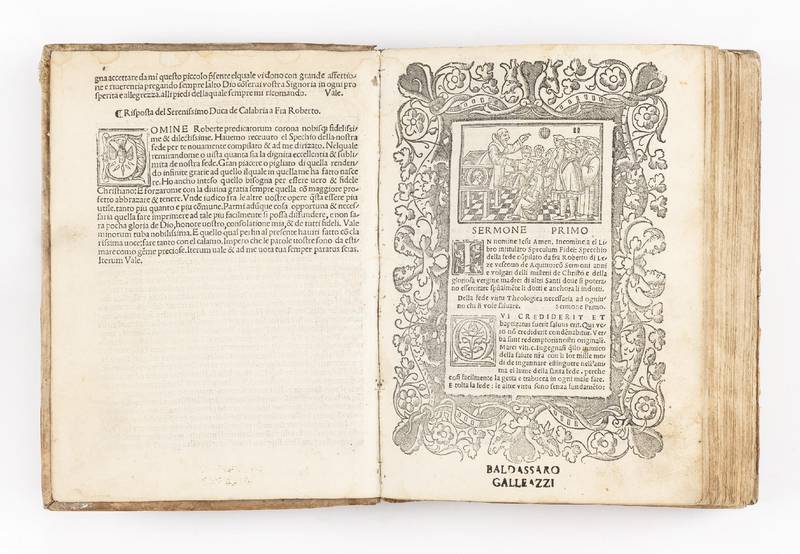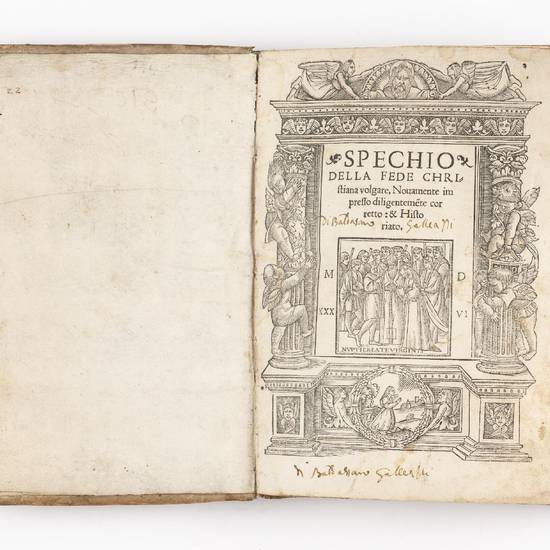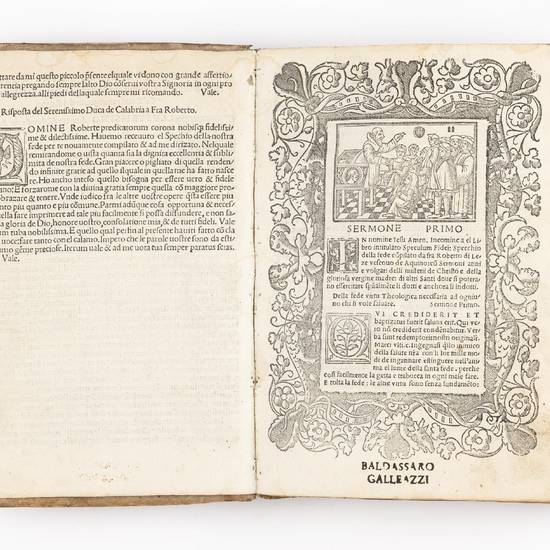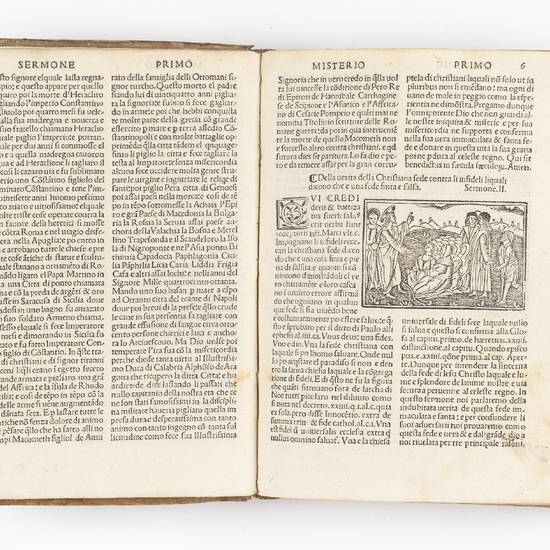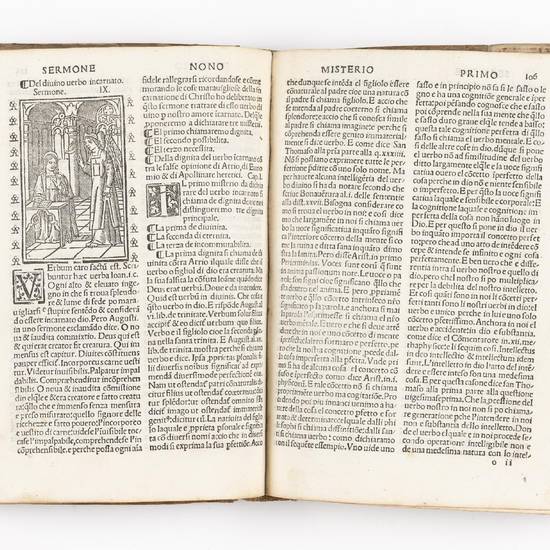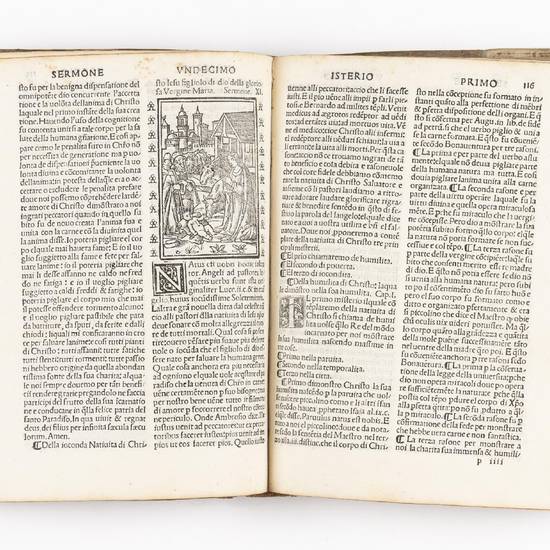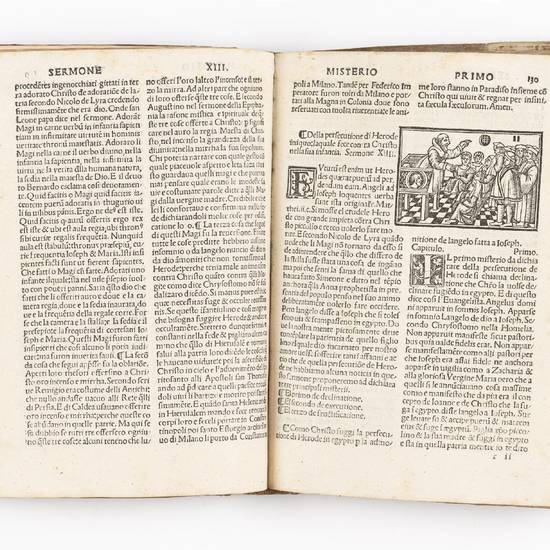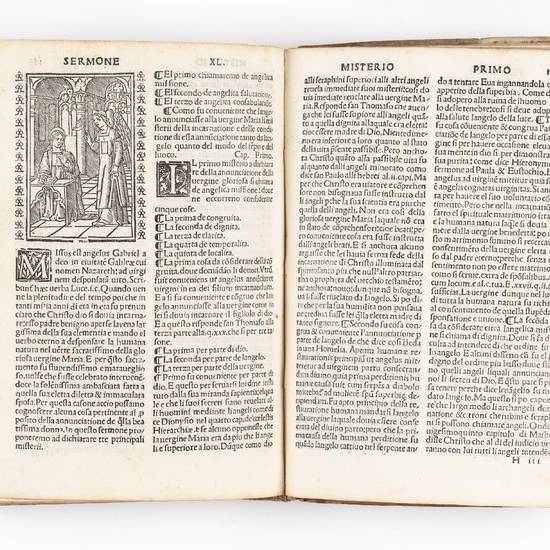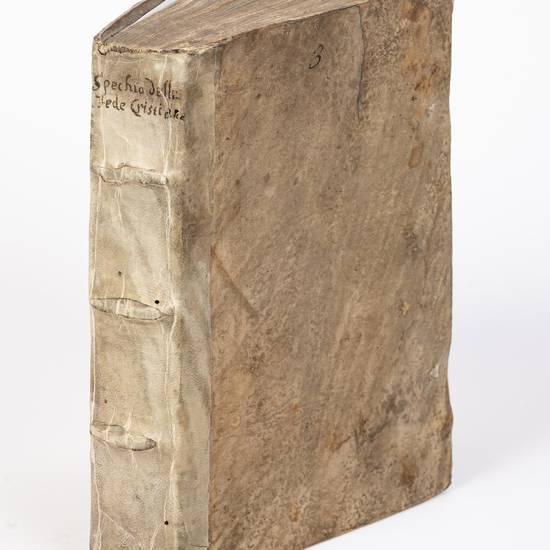ILLUSTRATED WITH ABOUT 50 WOODCUTS IN THE TEXT
4to (210x155 MM). 293, [5] leaves. Collation: a-z8 &8 [con]8 [rum]8 A-K8 L10. Title page within architectural border with a woodcut vignette in the center with the motto “Nuptie Beate Virginis”. Printer's device, register and colophon at l. L10r. Text printed in two columns. Woodcut border on l. a3r and about 50 woodcut vignettes in text, of different sizes and formats, one of which is signed with the monogram L of the Florentine engraver Lucantonio degli Uberti, active in the years 1503-1557 in Verona, Venice, and Florence. 17th-century vellum over boards, ink title on spine, traces of ties (spine anciently reinforced, panels slightly soiled). Later annotations and ownership's inscriptions on the front pastedown and flyleaf. On title page manuscript ownership's inscription “Di Baldassar Galeazzi” (repeated twice). Title page a bit soiled, worm track (partly restored) on some leaves slightly affecting the text, some marginal staining, minor restoration to the gutter of a few leaves not affecting the text, overall a good, genuine copy.
Nice illustrated edition (identical to Edit 16, CNCE9323 and CNCE9326 except for small differences on the title page) of the Specchio della fede by Roberto Caracciolo, a true best-seller of late 15th-century devotional literature. The author's name appears in the dedication to Alfonso, Duke of Calabria, and on the last leaf. Composed in 1490 in Lecce, the Specchio della fede was first published at Venice in 1505 and then reprinted several times.
“Un discorso a parte va fatto per le opere in volgare - i Sermones quadragesimales italiani e lo Specchio della fede - anche queste di ampissima diffusione, che appaiono essere […] il primo documento volgare nel suo genere: ché fino alla metà del ‘400 le prediche volgari che possediamo sono reportationes, redatte cioè da ascoltatori, mentre il Caracciolo appare il primo predicatore che stende egli stesso, e organicamente, in vista di pubblicazione, il frutto della sua attività oratoria. Anche in questo caso, si tratta di schemi che devono essere ben lontani dalle prediche quali tenute effettivamente sul pulpito. Se il pubblico che il Caracciolo ha di mira è ancora essenzialmente un pubblico di religiosi, esplicitamente dichiara d'altra parte di aspirare ad allargarlo anche a ‘laici e secolari' (lettera di dedica dello Specchio della fede ad Alfonso duca di Calabria). Le articolazioni fondamentali del discorso e le auctoritates sono enunciate sistematicamente in latino e tradotte poi in volgare. All'interno di ciascuna predica ricorre in genere almeno un exemplum, che è spesso condotto in forme vivacemente dialogate” (Z. Zafarana, Caracciolo, Roberto, in: “Dizionario Biografico degli Italiani”, XIX, 1976, s.v.).
Edit 16, CNCE9324; Sander, 1711; Essling, 837; Olschki, Choix, 4273.
[10082]

